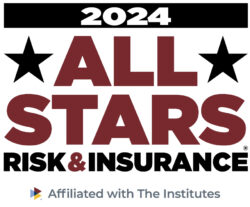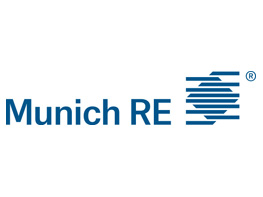Eric Johnson’s Unified Safety Program Is Helping Transform Baltimore’s Schools — and the City Itself

The Maryland Stadium Authority (MSA) is probably best known for its construction of Camden Yards, the baseball stadium that set the standard for urban sports design.
Or perhaps it’s M&T Bank Stadium, where the NFL’s Baltimore Ravens play.
But it’s the work done by senior vice president Eric Johnson in creating a risk management program for hundreds of contractors on a public school renovation and replacement project that earned Johnson a 2024 Risk All Star award.
You read that right: Johnson won the award for his work building schools.
How did a stadium authority get into that kind of work? In 2013, the Baltimore City Public Schools Construction and Revitalization Act allowed MSA to partner with the City of Baltimore, the Baltimore City Board of School Commissioners and the Interagency Committee on School Construction to replace or renovate nearly 30 of the city’s public schools.
The initiative, known as the 21st Century School Buildings Program, is designed to create better learning experiences for public school students in some of Baltimore’s most congested areas.
Of course, all of these building projects need insurance.
Johnson led the building of an owner-controlled insurance program, referred to as an OCIP, that encompasses 20 of the initiative’s 29 projects. By doing so, he created a unified safety program that brought together all of the contractors on the varied projects under a single set of safety standards.
Working with Alliant Insurance Services’ safety and claims, Astrus Insurance Solutions and the MSA’s in-house safety director, Johnson’s program achieved $8.15 million to date in verified contractor insurance premium credits.
Here’s the really great news: Not only has the program saved on insurance premiums and benefited students, but it also resulted in $388 million being contracted to local minority business enterprises (MBE), representing 33% MBE participation. The MSA exceeded its original 558-person local hiring commitment with more than 1,528 positions ultimately filled by local candidates.
There are a lot of things about the accomplishment that Johnson and his teammates can be proud of.
“All of the goals of the program were met. In addition, it was done on schedule and within or under budget,” he said. “We exceeded minority business enterprise participation, and we exceeded local hiring goals.”
In addition, because it utilized an OCIP, the project was able to employ a larger pool of contractors than it would have if smaller contractors had been indemnified under a single general contractor’s Contractor Controlled Insurance Program (CCIP).
“The trade contractors got full credit for their participation instead of being wrapped up under a CCIP,” Johnson said. “Creating partner relationships with construction managers and trade contractors was instrumental in the success of the OCIP program established,” Johnson said. &
 See all the 2024 Risk All Stars here.
See all the 2024 Risk All Stars here.










